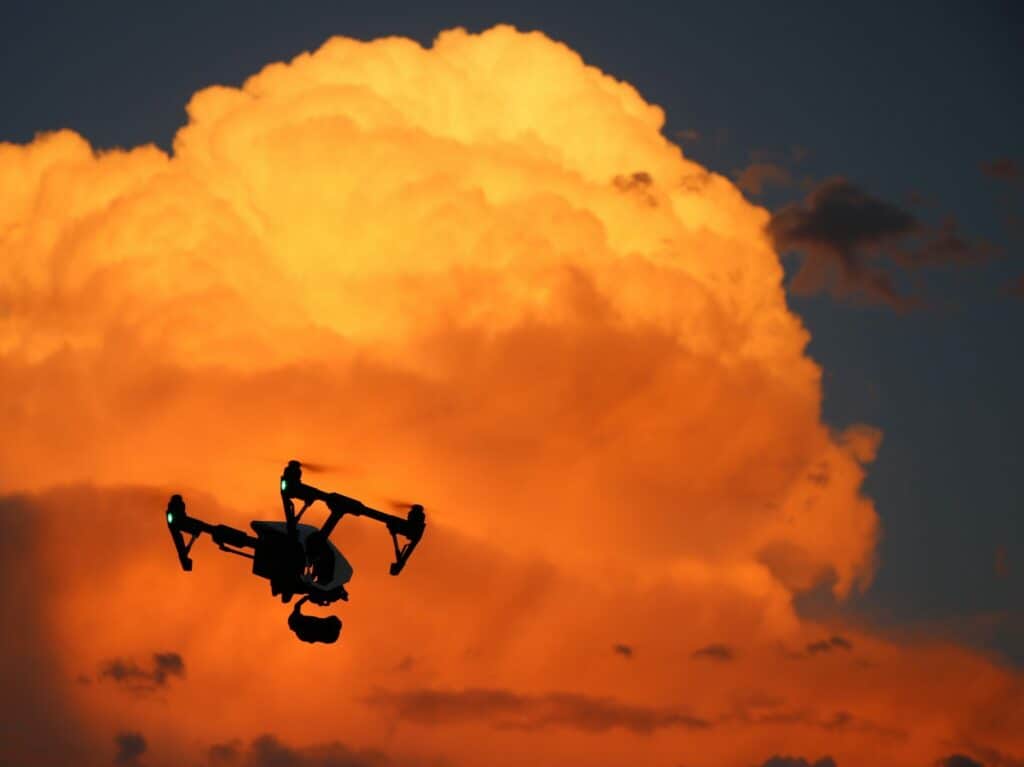by Dana Knight, Product Director of SkedFlex Vertical
In the world of drone operations, weather isn’t just a casual topic for chit-chat. It’s a critical factor that can mean the difference between an uneventful flight and a disastrous one. While many aviators are familiar with weather reports and forecasts, the concept of “drone-specific weather” might be new to some. In this article, we’ll explore what drone-specific weather is and why it holds immense importance for the safe and successful operation of unmanned aircraft.

Understanding Drone-Specific Weather
Drone-specific weather, as the term suggests, is weather data specifically tailored to the needs of drone operators. It delves beyond the general weather observations and forecasts to provide insights into factors that are particularly relevant to drones. This includes parameters such as wind speed and direction at different low altitudes, cloud cover, temperature variations, and humidity levels.
Unlike traditional aircraft, drones fly at lower altitudes and are more susceptible to changes in weather conditions close to the ground. This makes accurate and detailed weather information crucial for drone operators to make informed decisions about flight planning and ensuring the safety of both the drone and the surrounding environment.
The Importance of Drone-Specific Weather
- Micro-Climate Influences: One of the unique aspects of drone operations is their sensitivity to micro-climate influences. Even small variations in terrain can create micro-climate conditions that impact things like wind patterns and temperature. Drone-specific weather accounts for these nuances, helping operators anticipate potential challenges and make adjustments accordingly.
- Flight Stability: Drones, especially small ones, are susceptible to sudden gusts of wind and turbulence. Having accurate wind speed and direction information at different altitudes is essential for maintaining stable flight. Drone-specific weather data provides this level of detail, enabling operators to choose flight paths that minimize turbulence risks.
- Battery Performance: Extreme temperatures and high humidity levels can affect the performance of drone batteries, impacting flight time and overall efficiency. By having access to weather data that highlights temperature and humidity conditions at different altitudes, operators can better manage battery usage and optimize flight plans.
- Visibility and Obstructions: Cloud cover, fog, and other visibility-reducing weather conditions can impede drone operators’ ability to maintain visual contact with their aircraft. Drone-specific weather forecasts can provide insights into the likelihood of these conditions, enabling operators to plan flights during optimal visibility windows.
SkedFlex Vertical and TruWeather: Elevating Drone Safety
At SkedFlex Vertical, we understand the critical role that weather plays in the world of drone operations. That’s why we’ve partnered with TruWeather Solutions, https://truweathersolutions.com/ for enhanced drone-specific weather as part of our comprehensive offering.
TruWeather goes beyond the basics by providing granular weather predictions with a focus on factors that matter most to drone operators. They take into account terrain influences, micro-climate winds, cloud ceiling variances, and visibility conditions over short flights. By harnessing TruWeather’s insights, operators can confidently plan and execute their drone missions while mitigating risks and maximizing operational efficiency.
In the dynamic and evolving landscape of drone operations, having accurate and drone-specific weather data isn’t just a luxury – it’s a necessity. It’s a key element that empowers operators to make informed decisions, ensuring the safety of their drones, compliance with regulations, and successful mission outcomes.
As the Product Director of SkedFlex Vertical, I’m proud to offer TruWeather as part of our commitment to providing innovative solutions that elevate the standards of drone operations. With TruWeather, we’re helping drone operators not only navigate the skies but also navigate the challenges posed by ever-changing weather conditions.
About the Author: Dana Knight is a Part 107 Drone Pilot and is the Product Director of SkedFlex Vertical, an FAA approved UAS Service Supplier offering LAANC Services. With a passion for aviation and technology, Dana is dedicated to enhancing the safety and efficiency of drone operations through advanced weather data and comprehensive planning tools.